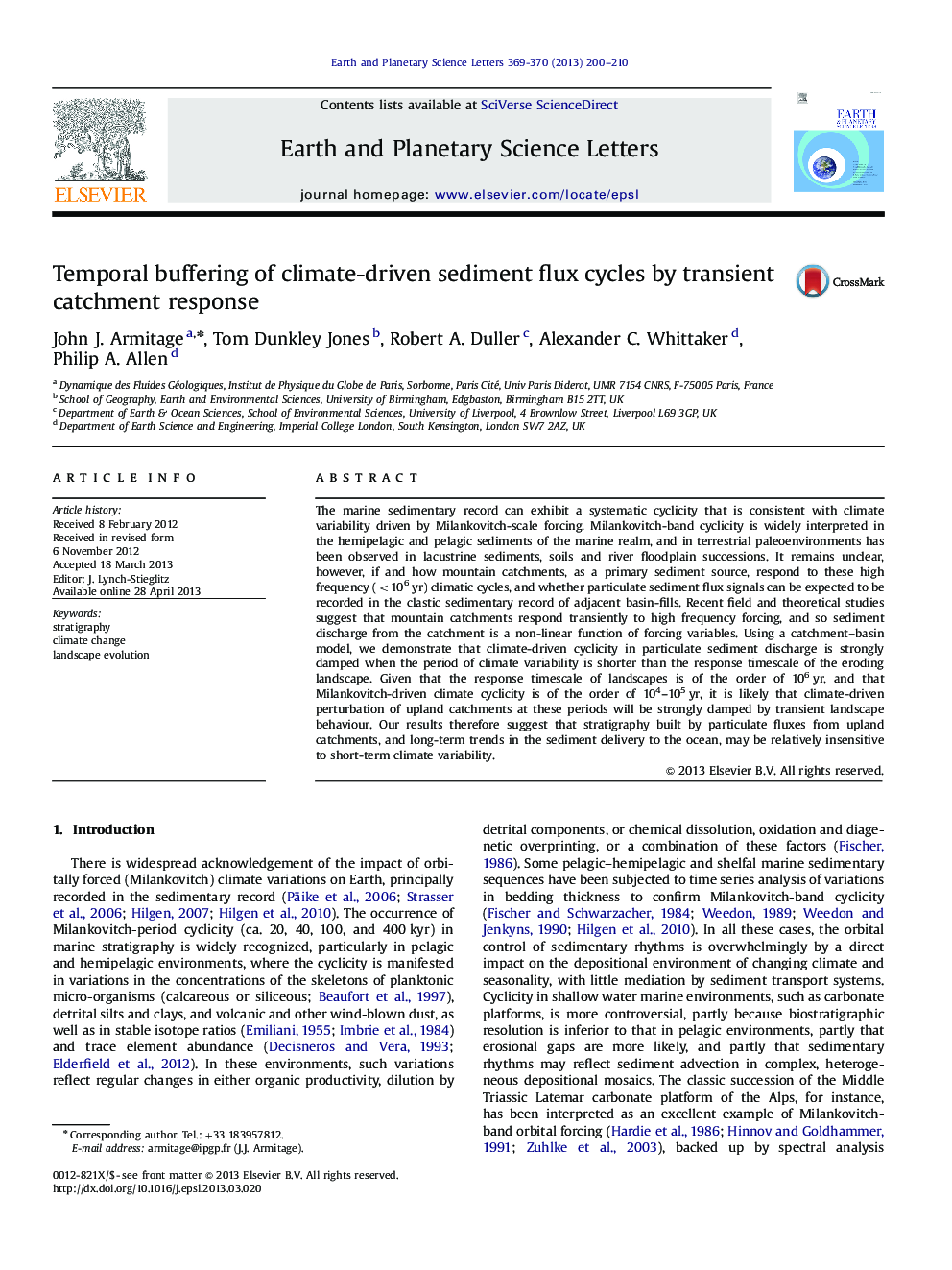| Article ID | Journal | Published Year | Pages | File Type |
|---|---|---|---|---|
| 4677106 | Earth and Planetary Science Letters | 2013 | 11 Pages |
•We model the erosional response of a catchment to cyclic changes in precipitation rate.•We examine the changes in sediment flux and grain sizes deposited.•Sediment flux and grain size are insensitive to high-frequency (<1 Myr) changes in precipitation.•Model implies that Milankovitch-scale oscillations in climate would not be preserved in siliciclastic terrestrial sedimentary records.
The marine sedimentary record can exhibit a systematic cyclicity that is consistent with climate variability driven by Milankovitch-scale forcing. Milankovitch-band cyclicity is widely interpreted in the hemipelagic and pelagic sediments of the marine realm, and in terrestrial paleoenvironments has been observed in lacustrine sediments, soils and river floodplain successions. It remains unclear, however, if and how mountain catchments, as a primary sediment source, respond to these high frequency (<106 yr) climatic cycles, and whether particulate sediment flux signals can be expected to be recorded in the clastic sedimentary record of adjacent basin-fills. Recent field and theoretical studies suggest that mountain catchments respond transiently to high frequency forcing, and so sediment discharge from the catchment is a non-linear function of forcing variables. Using a catchment–basin model, we demonstrate that climate-driven cyclicity in particulate sediment discharge is strongly damped when the period of climate variability is shorter than the response timescale of the eroding landscape. Given that the response timescale of landscapes is of the order of 106 yr, and that Milankovitch-driven climate cyclicity is of the order of 104–105 yr, it is likely that climate-driven perturbation of upland catchments at these periods will be strongly damped by transient landscape behaviour. Our results therefore suggest that stratigraphy built by particulate fluxes from upland catchments, and long-term trends in the sediment delivery to the ocean, may be relatively insensitive to short-term climate variability.
